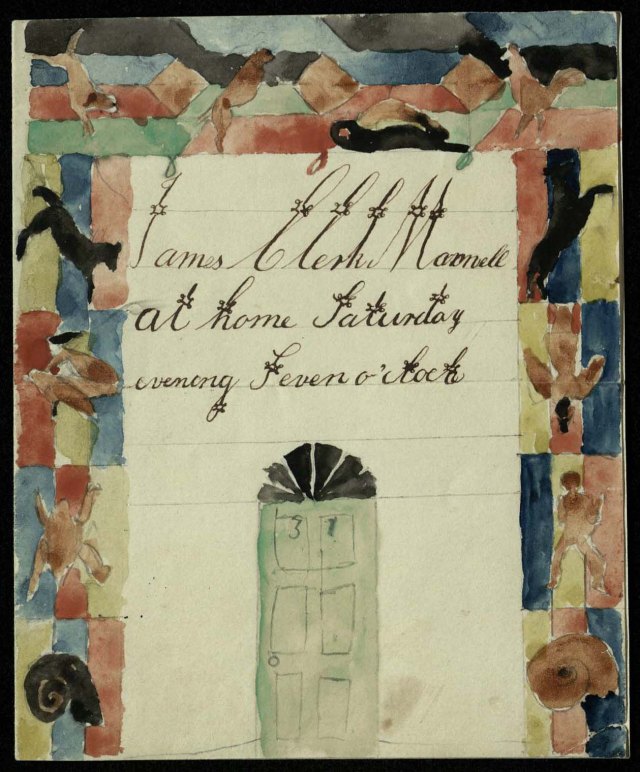
This month’s curio is a piece of stranded knitting worked by the Scottish physicist James Clerk Maxwell (1831-79) for his paternal aunt, Mrs Isabella Wedderburn, when he was about 12 years old. The intricate design in stocking stitch includes a Union Jack and lozenge shapes.
Two explanations have been found for the use to which the ‘Abigail’ was put: i) in a letter sent when the knitting was presented to the Library, it is described as an accessory for holding down sleeves when putting on a jacket and ii) Clerk Maxwell’s school friend and biographer described it as a sling for holding a workbasket. Both explanations presumably relate to the popular association of the name ‘Abigail’ with female servants.
The College has a small archive of items from Clerk Maxwell’s childhood (Add.ms.b.52). His mother died when he was young and thereafter he spent much of his time at the family estate of Glenlair and, after beginning his formal schooling at the Edinburgh Academy, with the Wedderburn family at 31 Heriot Row, Edinburgh. He also spent time with the family of another maternal aunt, Jane Cay.
His family on both his father’s and his mother’s side included talented artists but he was greatly encouraged, in particular, by his older first cousin, Jemima Wedderburn who later in life, as Jemima Blackburn (1823-1909), became a renowned watercolourist. The designs featured below demonstrate young James’ obsession with geometric form and harmonious colour combinations. James had accompanied his father to the Royal Scottish Society of Arts in 1845-6 and saw the work of David Ramsay Hay (1798-1866). Hay’s decorative work used geometrical symmetry and young James was inspired to develop a method of drawing ovals using string around pins.

Later, in his first year at Edinburgh University (1847), Clerk Maxwell developed these ideas about oval curves and wrote an important paper on analytical geometry which was presented to the Royal Society of Edinburgh. During his time at Trinity (1850-56), he developed his interest in colour by experimenting using a colour wheel. The scientist Thomas Young (1773-1829) had suggested that there were three distinct receptors in the eye which responded to different ranges of light. Using the spinning wheel to mix the primary lights of red, blue and yellow, Clerk Maxwell was able to demonstrate that, if colours are mixed with mathematical precision, then it is possible to synthesise any colour. The experiments also revealed that we see colour in lights differently to colour in pigments. For example, a mixture of blue and yellow light produces a pinkish hue, but blue and yellow pigments mixed together make green. Clerk Maxwell’s analysis using the colour wheel led him to devise a colour triangle for calculating the ratios of the three primary lights needed to create any particular colour.

James Clerk Maxwell is now remembered as one of the most influential scientists of all time. His later work included study of the composition of Saturn’s rings (drawing the conclusion that they were composed of a myriad of small, solid particles). This conclusion was confirmed by the work undertaken by the Voyager space probes of the 1980s.
Other important research was on electromagnetism and he devised a set of equations which later formed the basis for Einstein’s theory of relativity. When the Cavendish Laboratory was established here in Cambridge in the 1870s and became the first Cavendish Professor of Experimental Physics. Clerk Maxwell died in Cambridge in 1879.
Further Reading:
http://www.clerkmaxwellfoundation.org/







